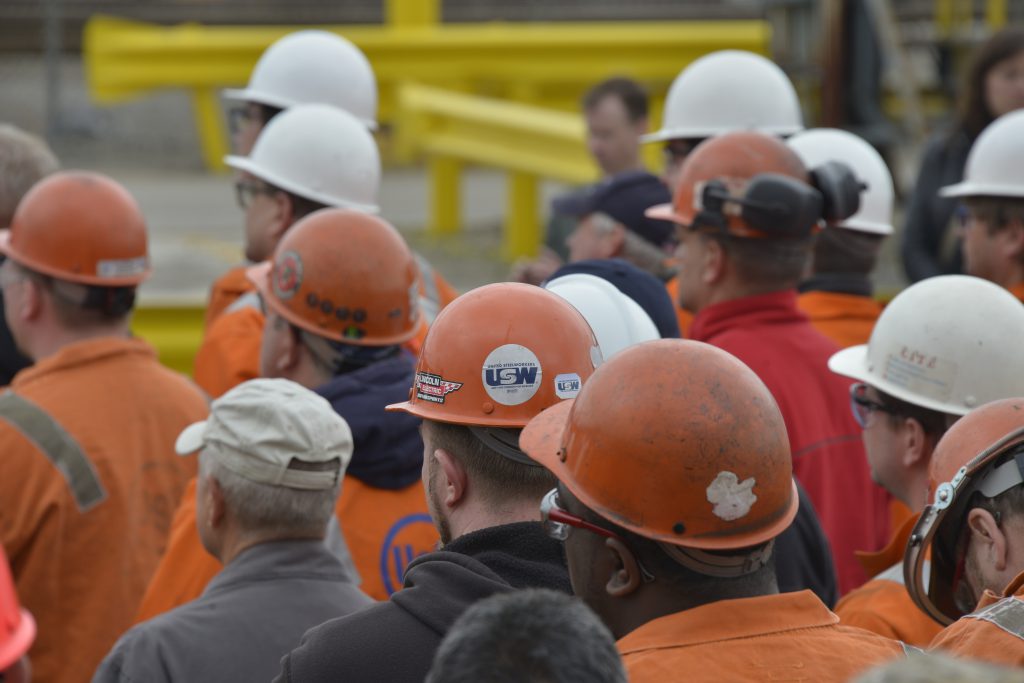
Steel companies and the United Steelworkers told commissioners that trade enforcement measures helped stabilize the industry – and led to lower carbon emissions.
You may remember that Alliance for American Manufacturing President Scott Paul testified last week before the International Trade Commission (ITC) during a three-day hearing examining the impact of Section 232 and 301 tariffs on U.S. industries. Paul highlighted the success of Section 232 in revitalizing the American steel industry and warned the ITC that calls to remove these tariffs are “ill conceived.”
But Paul wasn’t the only speaker who touted the benefits of Section 232 and Section 301 trade action last week. As representatives of labor and business both made clear, these measures have helped stabilize U.S. industry.
Background
In March 2018, then-President Trump imposed Section 232 tariffs on U.S. imports of certain steel and aluminum products, with the goal of strengthening national security and allowing the United States to utilize idle steel and aluminum facilities to ensure a domestic supply of these materials.
Also in 2018, a Section 301 tariff investigation into China’s Acts, Policies, and Practices Related to Technology Transfer, Intellectual Property, and Innovation resulted in a set of four rounds of tariffs on goods originating from China. Between August 2018 and September 2019, the Office of the U.S. Trade Representative first imposed Section 301 tariffs on approximately $50 billion worth of annual imports from China, followed by two additional rounds of tariffs on $200 billion, then $126 billion worth of imports.
As part of the Omnibus Appropriations Act signed into law in March 2022, the ITC was directed to investigate the economic impacts of the Section 232 and 301 tariffs on the industries most affected – namely, the steel and aluminum industries. The ITC announced the beginning of that investigation in May, and from July 20 to July 22, 2022, the Commission held a public hearing at which stakeholders and interested parties shared testimonies.
The 2022 Hearings
Dozens of stakeholders including steel and aluminum manufacturers, research organizations, elected officials, and other interested parties gathered over WebEx to offer their perspectives on the Section 232 and 301 tariffs.
Before Section 232 was enacted in 2018, much of the steel being imported into the United States was unfairly traded, said Benjamin Caryl, associate general counsel of International Trade and Public Policy for United States Steel Corporation (U.S. Steel).
Indeed, many countries used tactics like massive government subsidies, state-owned enterprises and lax labor and environmental laws to produce their steel, which they were able to price artificially low and dump into the U.S. market.
But Section 232 allowed the industry to recover, with U.S. companies now able produce and price their steel at newly profitable levels, Caryl said, adding that the Section 232 tariffs remain vital to deter unfair import tactics, supporting the American steel industry and the thousands of workers it employs.
Caryl wasn’t alone in his assessment; these statements were echoed by other speakers, including the United Steelworkers (USW). The USW is the continent’s largest industrial union, representing 1.2 million members and retirees across North America.
USW Local 6787 President Pete Trinidad told the ITC that steelworkers “can compete with everyone in the world when there’s a level playing field,” which is why maintaining Section 232 and 301 is vital.
Pre-tariffs in 2018, approximately 13,500 steelworkers lost their jobs due to foreign import competition. Due to unethical production tactics used overseas other countries were able to export steel and aluminum for lower prices than these materials cost to produce in the United States. But Section 232 provided a valuable tool that allowed the domestic steel industry to recapitalize and recover from this period of instability, Trinidad said.
The Economic Policy Institute (EPI) found that Section 232 led to more than $15.7 billion in investments in new or upgraded steel facilities, creating at least 3,200 direct jobs. EPI also noted in a brief filed with the ITC ahead of the hearings that Section 232 did this “without causing harm to downstream consumers of steel products in the United States.”
The Section 232 and 301 tariffs may also have unexpected environmental benefits, according to Tamara Weinert, president of Business Area Americas at the global stainless steel manufacturer Outokumpu.
America’s steel industry has a carbon footprint 70% lower than the global industry average in terms of greenhouse gas emissions, Outokumpu said. With U.S.-produced steel having significantly less adverse environmental effects, the increased domestic production and supply that resulted from these tariffs has global benefits regarding the climate crisis.
Those claims are reverberated by American Iron and Steel Institute President Kevin Dempsey, who detailed the transition from imported steel to domestically produced steel — and emphasized its positive effect on the climate crisis.
According to Dempsey, the import levels for steel were 38 million tons in 2017 (pre-tariff), 28 million tons in 2019, and decreased to 22 million tons in 2020. At the same time, as import levels fell the U.S. production to capacity ratio increased. With this domestically produced steel having a less negative effect on the environment compared to previously imported steel, the Section 232 tariffs have benefitted the climate in addition to the domestic steel industry, Dempsey explained.
Bradley Laas and Stockton Grunewald contributed to this report.
